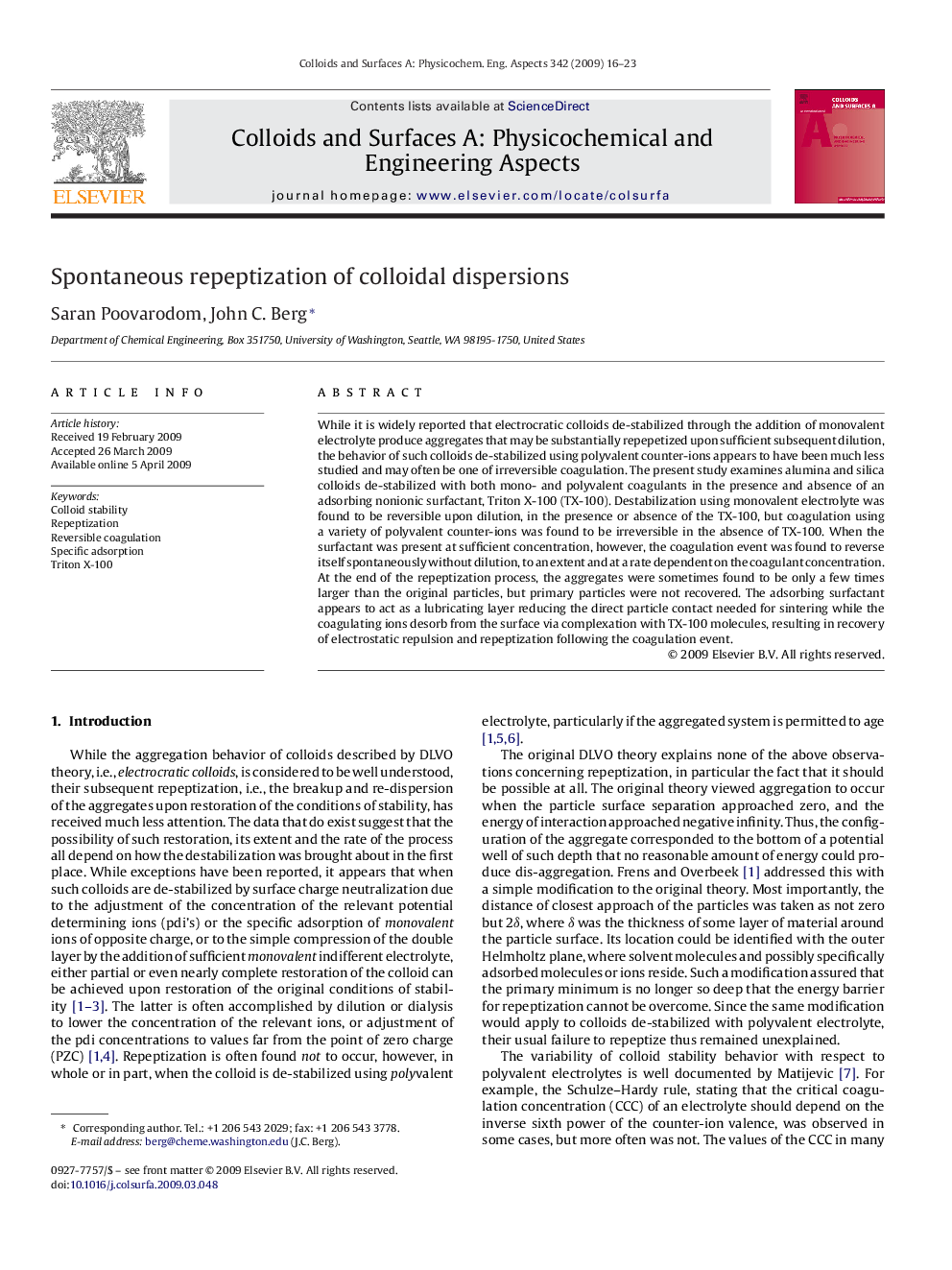| Article ID | Journal | Published Year | Pages | File Type |
|---|---|---|---|---|
| 595950 | Colloids and Surfaces A: Physicochemical and Engineering Aspects | 2009 | 8 Pages |
Abstract
While it is widely reported that electrocratic colloids de-stabilized through the addition of monovalent electrolyte produce aggregates that may be substantially repepetized upon sufficient subsequent dilution, the behavior of such colloids de-stabilized using polyvalent counter-ions appears to have been much less studied and may often be one of irreversible coagulation. The present study examines alumina and silica colloids de-stabilized with both mono- and polyvalent coagulants in the presence and absence of an adsorbing nonionic surfactant, Triton X-100 (TX-100). Destabilization using monovalent electrolyte was found to be reversible upon dilution, in the presence or absence of the TX-100, but coagulation using a variety of polyvalent counter-ions was found to be irreversible in the absence of TX-100. When the surfactant was present at sufficient concentration, however, the coagulation event was found to reverse itself spontaneously without dilution, to an extent and at a rate dependent on the coagulant concentration. At the end of the repeptization process, the aggregates were sometimes found to be only a few times larger than the original particles, but primary particles were not recovered. The adsorbing surfactant appears to act as a lubricating layer reducing the direct particle contact needed for sintering while the coagulating ions desorb from the surface via complexation with TX-100 molecules, resulting in recovery of electrostatic repulsion and repeptization following the coagulation event.
Related Topics
Physical Sciences and Engineering
Chemical Engineering
Colloid and Surface Chemistry
Authors
Saran Poovarodom, John C. Berg,
